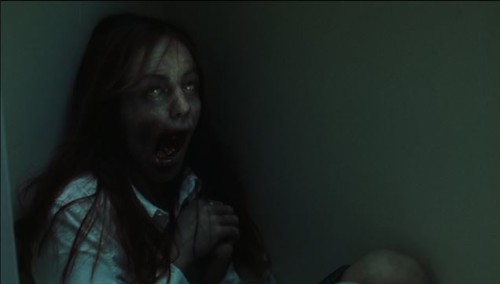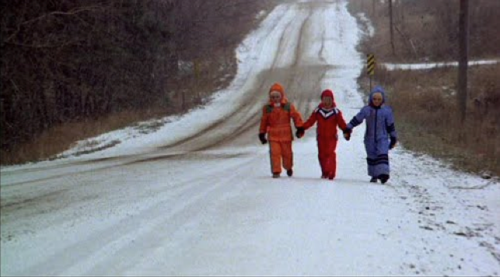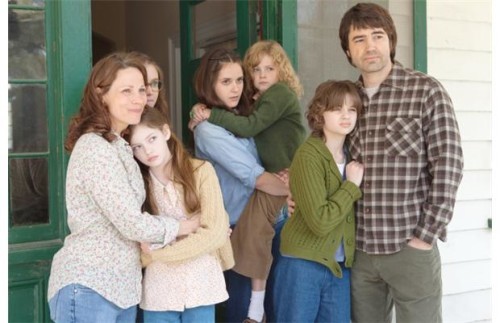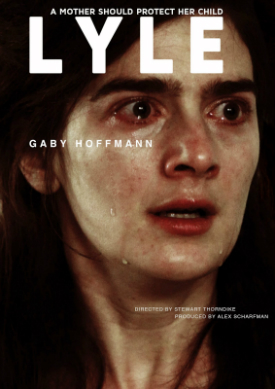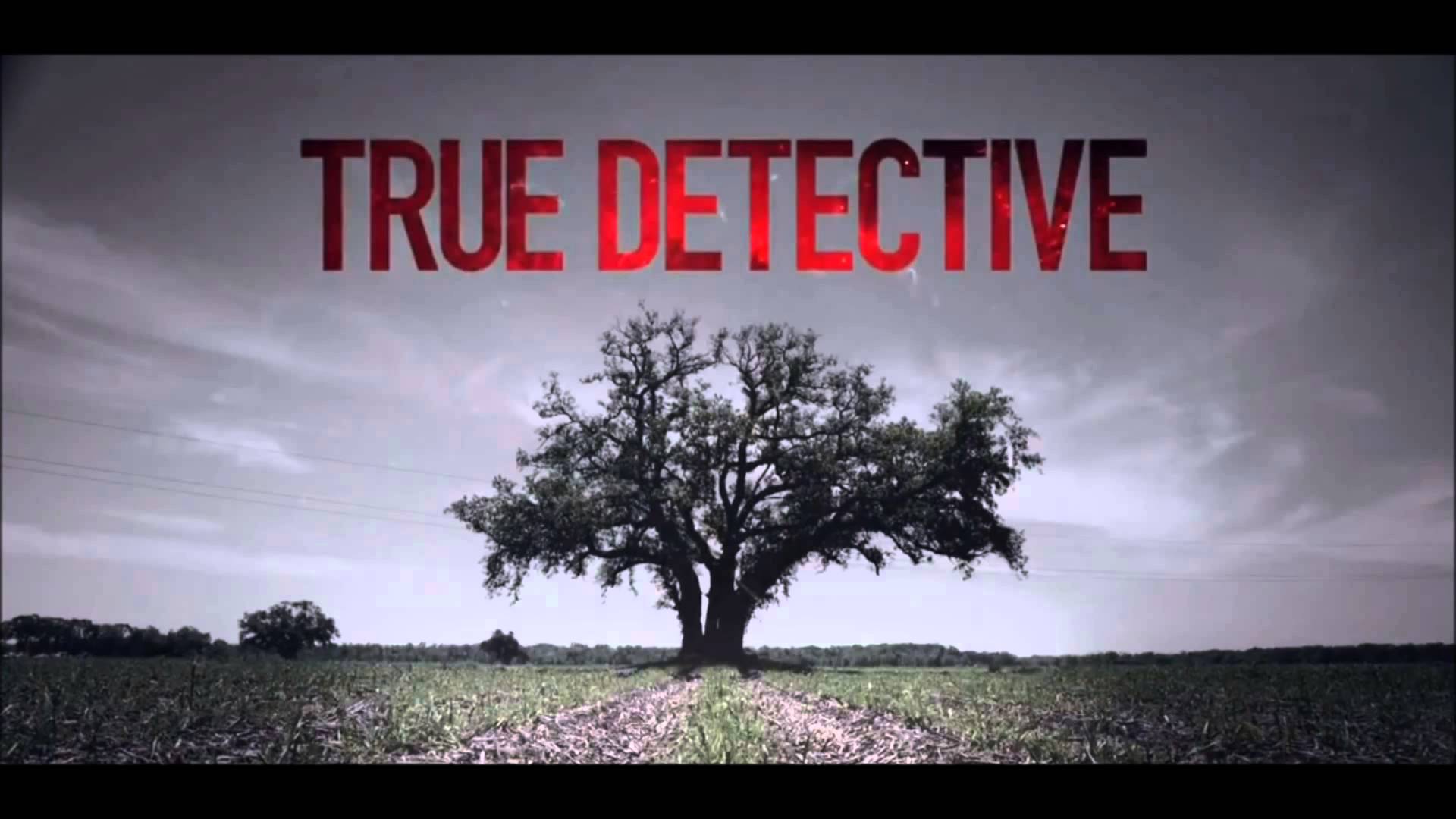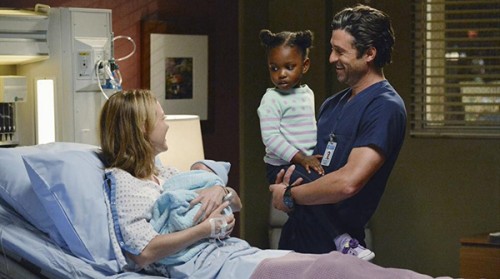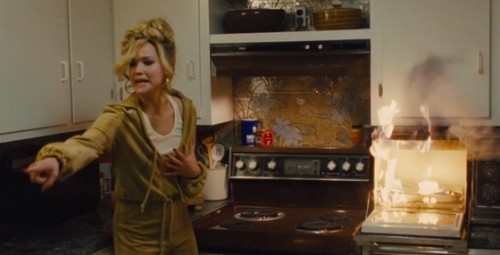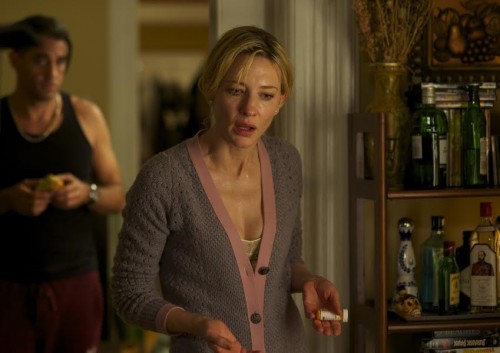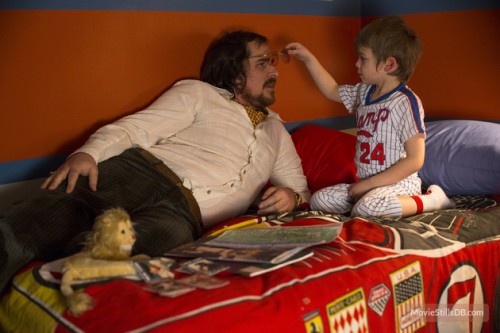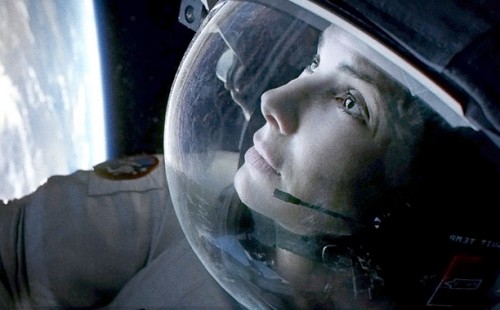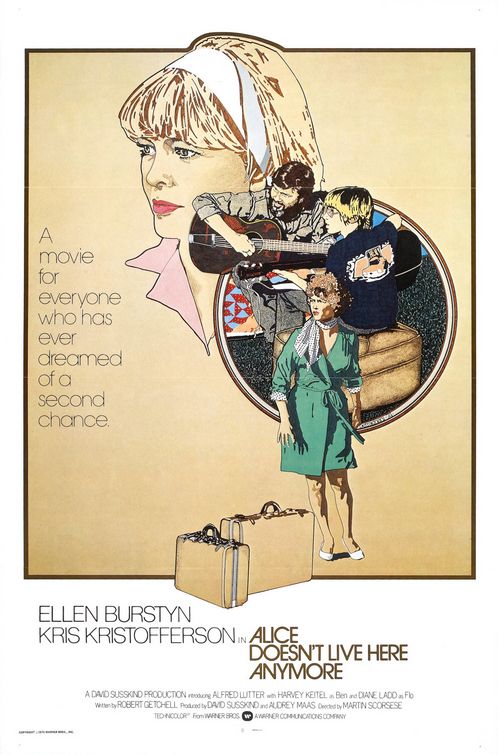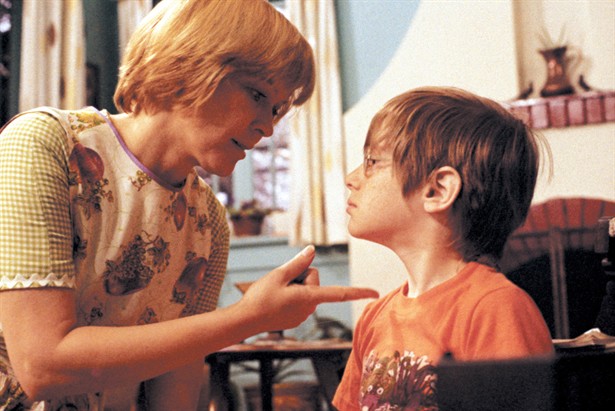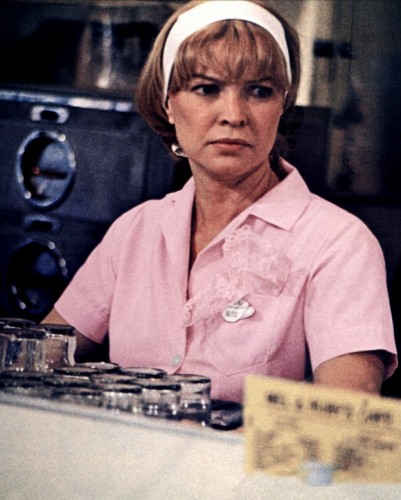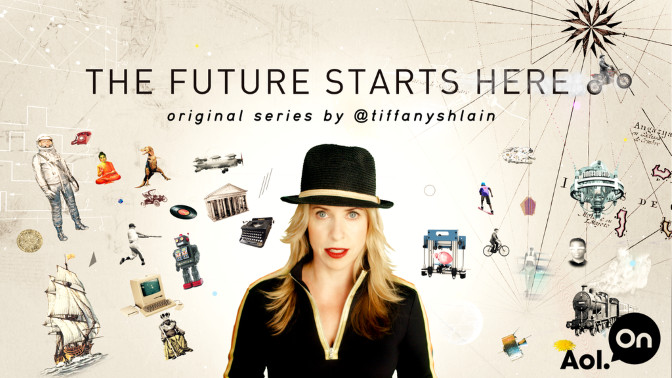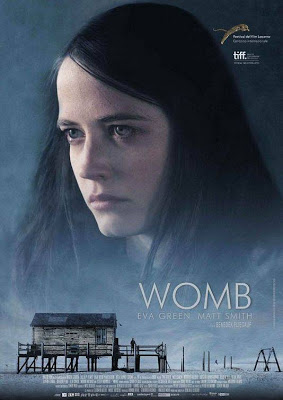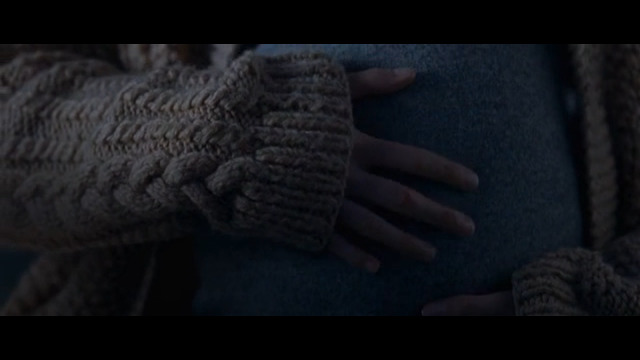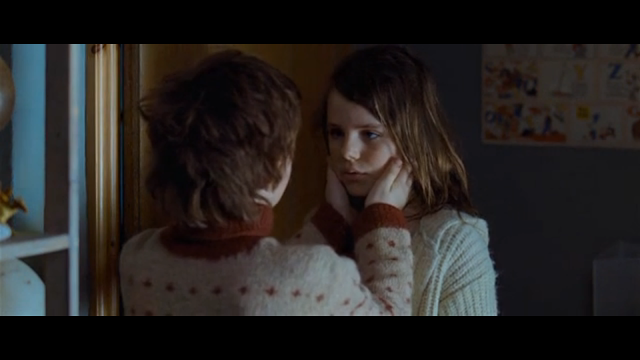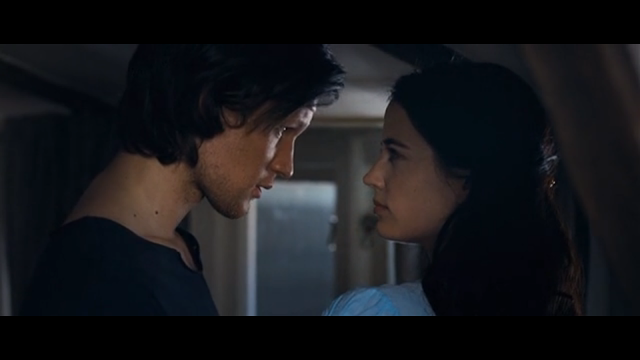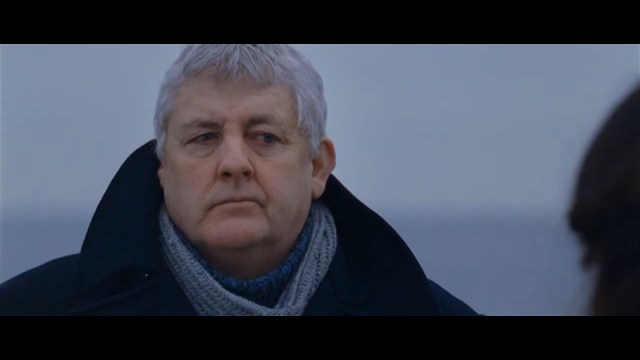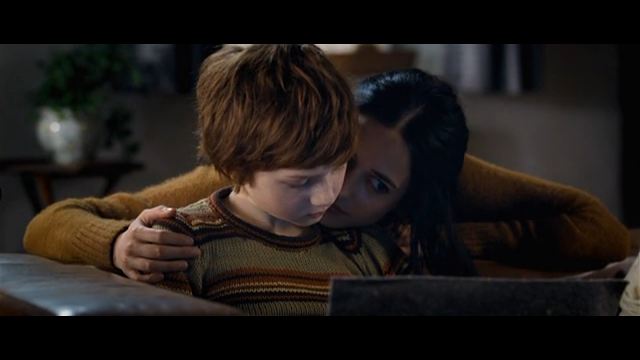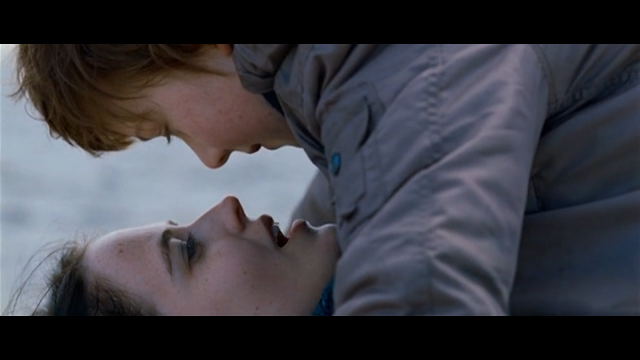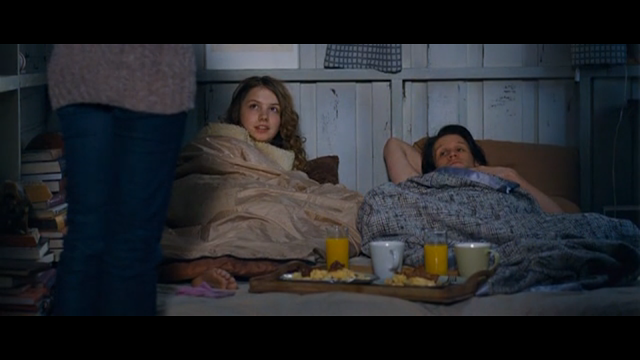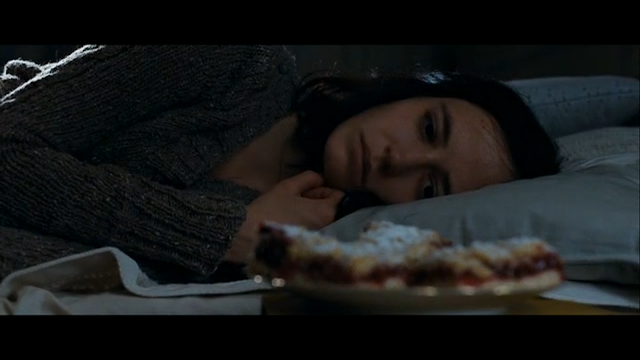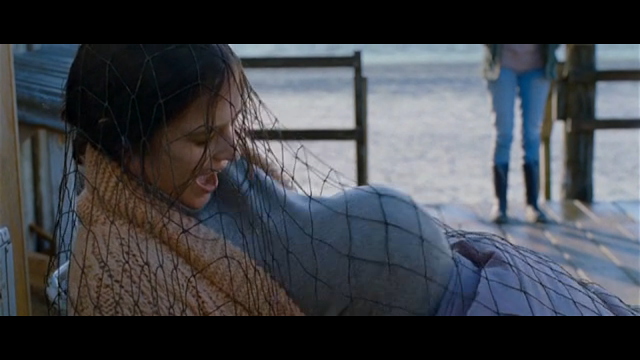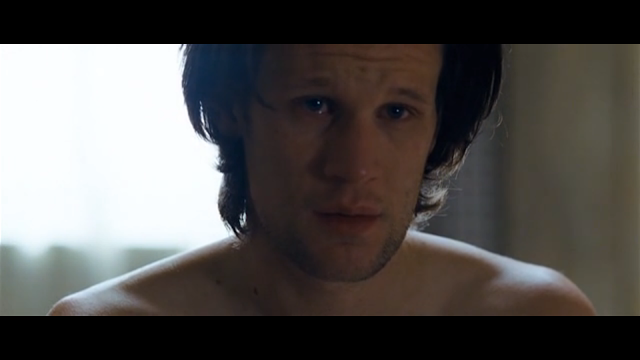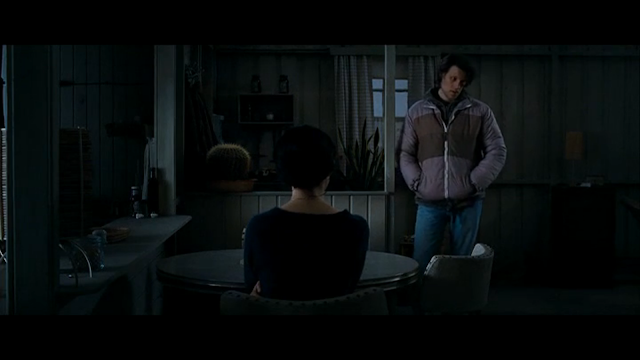This guest post by Rebecca Willoughby appears as part of our theme week on The Terror of Little Girls.
If horror films with little girls at their centers express anxieties about puberty, female potential, or the morphing of charming young women into screeching harpies, then The Ring is probably one of the best examples. Its little girl, Samara Morgan, seems to be just plain inexplicably evil.
If recounted chronologically, her “real world” back story goes something like this: Samara was adopted by Richard and Anna Morgan when Anna failed (repeatedly) to conceive. I should note that I’m not talking about the sequels, which to me are clearly made not because we necessarily want to know more about the story and the characters, but because the first film enjoyed some financial success. Anyway, after the adoption, strange things begin to happen at the Morgan’s horse ranch, including the animals going crazy and drowning themselves. Anna begins seeing things, and believes the terrifying images are generated by Samara. The Morgans decide to seek psychiatric treatment for Anna and for Samara; at some point both are released, but Anna is still disturbed. Believing Samara to be the source of her visions, Anna suffocates her daughter and throws her into a well, then leaps off a cliff near their home.
But Samara isn’t dead, and spends seven days expiring at the bottom of said well. Afterward, well, even if she wasn’t evil before, she certainly has an axe to grind. Samara’s supernatural obsession becomes “showing” people terrible “things,” through her strange psychic ability, which gives her the power to create media—this special talent eventually takes the form of a cursed videotape that kills the viewer seven days after watching. Usually this process involves a very waterlogged and very scary-looking Samara crawling out of a leaky television set and looking at the victim with her very angry eye, whereupon that victim also suddenly becomes very scary-looking and waterlogged, but also totally dead.
When I saw the film on its release, I slept with the lights on for seven days. Yes, me: horror film aficionista, one who has seen some pretty intense stuff in the service of her dissertation research. Right. While at the time I was kind of obsessed with figuring out just why the film scared me so much, now I am kind of obsessed with one scene—hell, just a few shots—and one line of dialogue from the movie.
It’s probably not the scene that immediately springs to the mind of most folks who have seen the film. It’s not the last terrifying moments in Noah’s (Martin Henderson) life where a slimy Samara (Daveigh Chase) slithers out of a television screen and stalks him across his studio apartment to fulfill her awful curse. It’s not even the first of many interruptions of the linear narrative with shocking or weird images: where in the midst of Rachel’s (Naomi Watts) conversation with her bereaved sister Ruth (Lindsay Frost), we’re treated to a brief shot of poor Katie (Amber Tamlyn), the film’s first victim, crouched in a closet with a horrifying look on her dead face. It’s the scene when Rachel, previously rebuffed by Mr. Morgan in her search to discover who Anna Morgan and her daughter were, returns to his farm at night (brilliant move in a horror film) and stumbles upon a videotape of Samara Morgan’s psychotherapy.
We know that something significant is about to happen because—aside from the usual horror film suspense buildup—Rachel is surprised by a centipede as she rifles through a box of the Morgan’s belongings. She’s seen this centipede before in the fabled videotape that kills you, and throughout the film images from the tape seem to intrude little by little onto the real world. These abstract symbols not only frighten, but link events in the real world to Samara’s cursed tape: this particular creature recalls the “spiders, snails, and puppy-dog tails” that little girls are decidedly not supposed to be made of. When Rachel engages this videotape, notably created by the patriarchal forces that might be seen to repress Samara, she sees Samara in a sparse hospital room in fast motion, staring at the clock as its hands whirl around and around. An off-camera doctor indicates that they are in hour 14 of therapy–a therapy where Samara is wired with electrodes, plugged into a wall, and asked a variety of questions. The doctor makes several inquiries before she responds. But the most disturbing and important moment occurs when, just after Samara asserts that she loves her mommy, the Doc indicates that Samara is hurting her. When he says, “You don’t want to hurt anyone,” Samara responds: “But I do, and I’m sorry. It won’t stop.”
A revelation! A young girl supposedly given up by her family, subsequently adopted, and then poked and prodded by medical science and creepy male psychologists admits to having feelings other than love, maternity, and joy? Amazing! So although as a society we might locate a lot of anxiety in the maturation of young girls, this film—at least for a moment—doesn’t repress the idea that young girls might have feelings other than the ones society tells them to have. What’s problematic, of course, is that the film sees this admission as evidence of Samara’s evil. While the film overall may not be very progressive in terms of its depiction of women, and young girls in particular, it does have this ONE MOMENT of openness, like a valve releasing some of the pressure of repression.
In addition to admitting that she wants to hurt people, Samara is plagued by the idea that her adopted father is going to leave her in the institution, that he doesn’t love her. Eventually, her mother kills her, ostensibly because her idealization of what it means to be a mother didn’t come true exactly as she envisioned it. Because her adopted daughter isn’t “sugar and spice and everything nice” all the time. The expectations that society doles out for young girls and for mothers is far from realistic. Is this disconnect the real horror?
I’d like to take a moment to point out that Aiden (David Dorfman), Rachel’s young son, is far from a normal kid. He’s able to channel that creepy-but-probably-our-hero vibe that was perhaps first perfected by Haley Joel Osment in The Sixth Sense just a few years before The Ring. Rachel is also probably not up for a Mom-of-the-Year Award; like Anna and Richard Morgan, she and Noah haven’t been the best parents in the world. Ruth Goldberg has written insightfully about the mirroring present in The Ring between Anna and Richard Morgan and Rachel and Noah with Aiden in Barry Keith Grant’s book on horror film, The Planks of Reason. It’s very clear that while Aiden is a model kid—picking out not only his clothes for Katie’s funeral, but Rachel’s as well, and being extraordinarily self-sufficient because Rachel is working all the time—Rachel and Noah are far from model parents. While she certainly doesn’t seem to share Anna Morgan’s homicidal ideas, Rachel’s life is not exactly constructed to be conducive to having a young child; she relies on Aiden’s capable nature to take up the slack. So really, part of the “terror” of little girls has to do with their mothers—the expectations that society heaps upon them for a “perfect” child, and that they must always, under all circumstances (including unrelenting evil) love their offspring. Certainly reality is far more complicated, and motherhood and childhood much more complex. If The Ring is expressing THAT anxiety, then the film’s success should be evidence that this is a conversation society needs to have.
On that note, one final word on sequels. I might have tipped my hand in the paragraphs above about my general feelings for them, but I do at the end of the day have a hard time believing that any film project is mounted for purely financial or business-oriented reasons. I have to think that there’s just too much work involved in an endeavor like filmmaking to justify it with solely materialistic motives. Therefore, if there are sequels to The Ring (which there are, but which I judge to be inferior in many ways to the style of the original—which was not even an “original,” but that’s another essay), then it’s because there’s some deeper driving force behind the need to express the anxieties at their center. So, I’ll tentatively say: onward to The Ring 3! Perhaps the most frightening things about this film in the end are its telling links to some of the more frightening aspects of our own society. If it takes sequels to work those issues out, bring them on.
Rebecca Willoughby holds a Ph.D. in English and Film Studies from Lehigh University. She writes most frequently on horror films and melodrama, and is a Visiting Assistant Professor of English at Bucknell University in Lewisburg, Pennsylvania.
